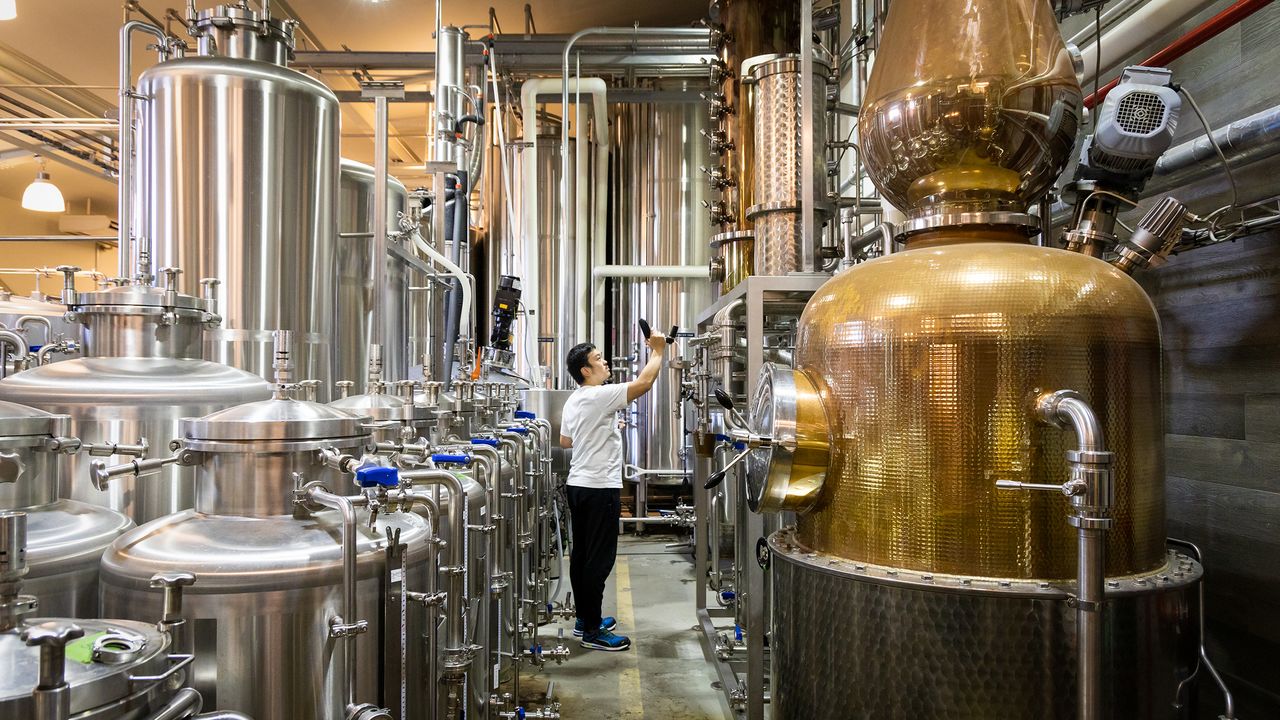
Japanese Craft Gin: Kyoto Distillery’s Ki no Bi Blends Storied Water and Local Botanicals
Guideto Japan
Food and Drink Travel- English
- 日本語
- 简体字
- 繁體字
- Français
- Español
- العربية
- Русский
Blazing Trails for Japanese Craft Gin
There is an old saying in Japan that you can learn a lot about a place by drinking the local sake. Today, this no longer applies just to nihonshu. There are now small-scale operations around Japan that are producing outstanding craft beer and gin with local water and ingredients.
Craft gin, in particular, is a richly complex expression of local goodness. Gin is a spirit infused with botanicals—fruits, herbs, spices, tree bark, and roots—that add flavor and aroma. The only botanical actually required in gin is juniper berries, allowing distillers to be creative in coming up with their own individual character through a mixture of other ingredients, typically between 5 and 10. Using locally sourced ingredients helps express regionality, with the gin then also being matched with fruits and other products from the area in cocktails to create a truly local flavor.
Kyoto Distillery helped usher in Japan’s nascent craft gin boom when its dry gin made with local botanicals like gyokuro tea, yuzu, and sanshō (Japanese pepper) hit the market in 2016. The gin’s clean flavor is something even drinkers new to the spirit can enjoy, and its aromas, so evocative of Japan’s old capital of Kyoto, have ushered fans deeper into the world of gin.
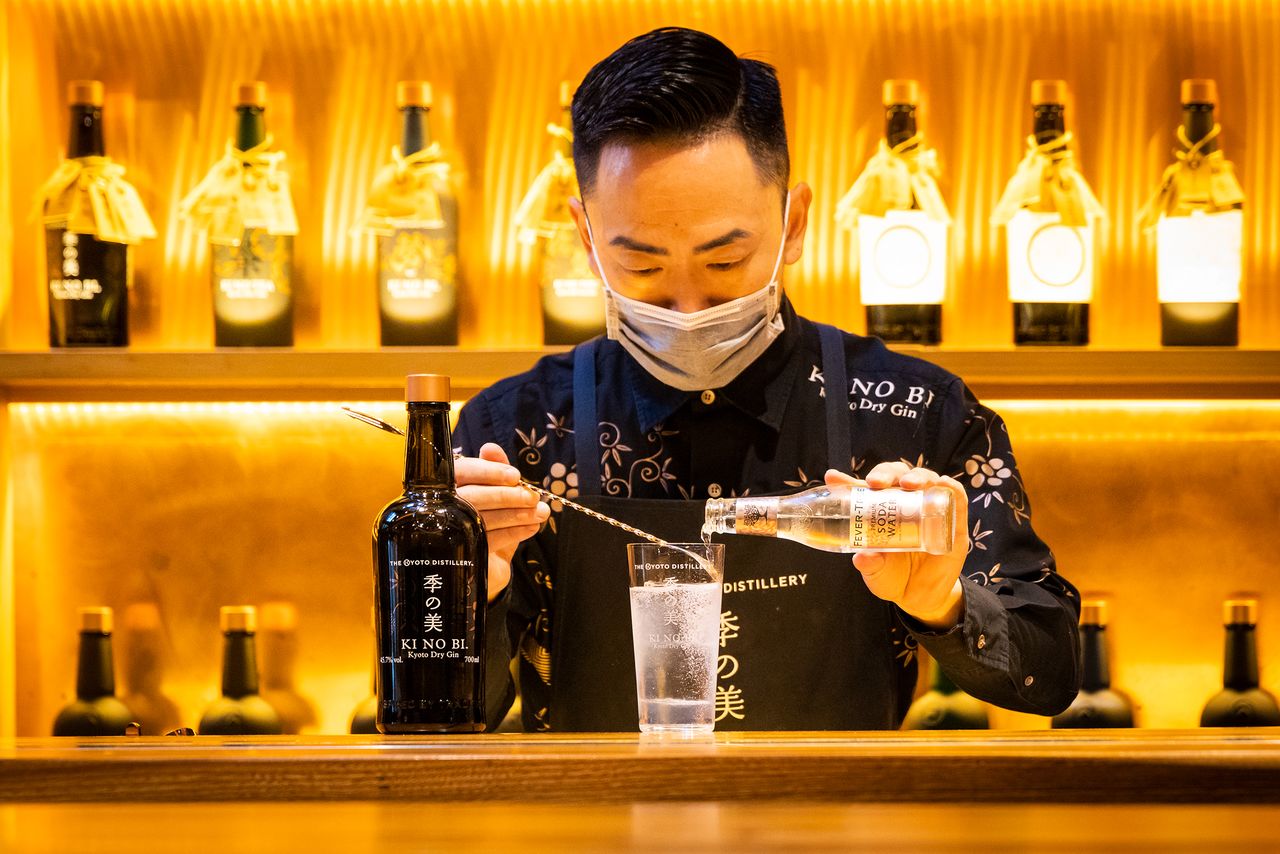
A bartender mixes a drink at the House of Ki no Bi, Kyoto Distillery’s brand shop. Most people drink gin mixed with tonic, but plain soda helps bring out the gin’s uniquely clean delicacy.
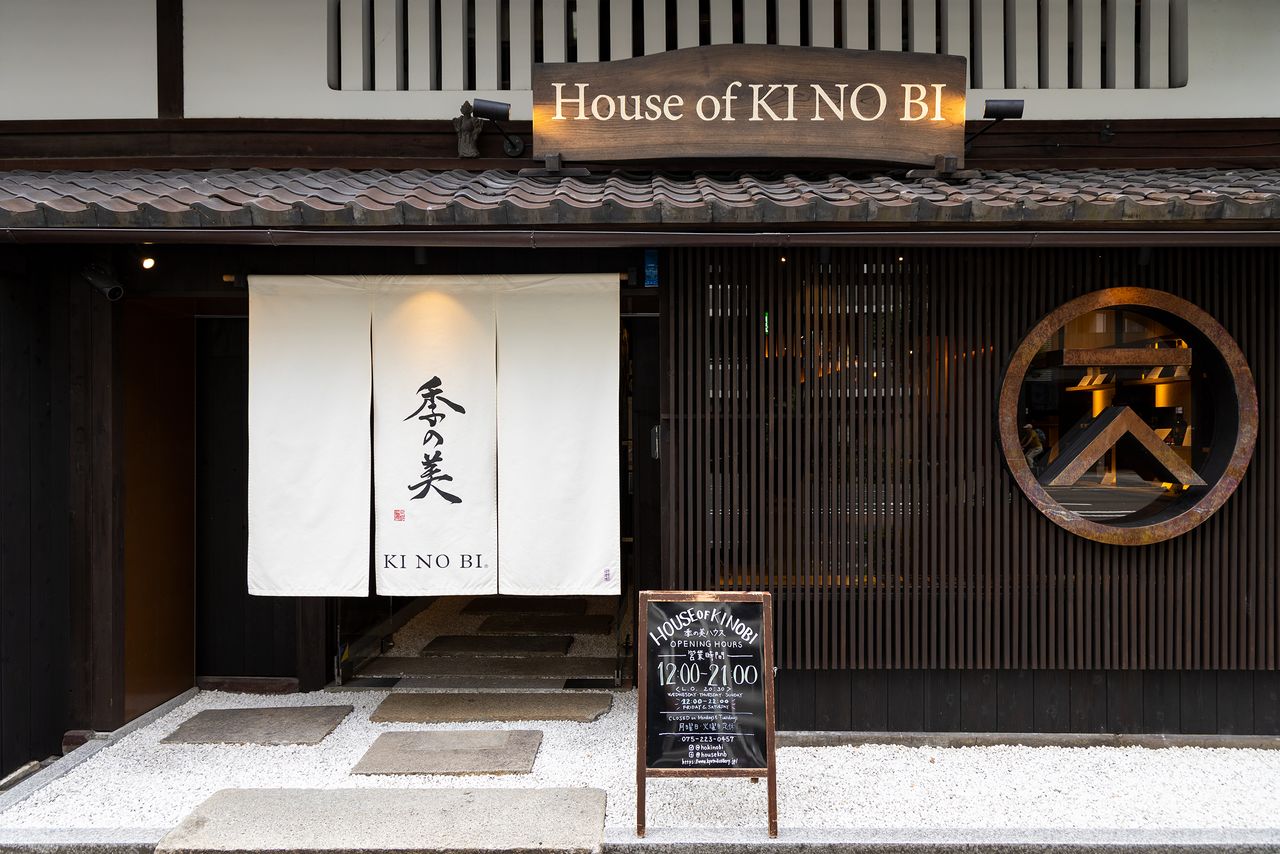
The House of Ki no Bi is near Kyoto’s city office and the Kyoto Gyoen National Garden.
Bringing Kyoto Artisanship to Gin
The Kyoto Distillery was founded by David Croll—native of gin’s heartland of Britain—his wife Kakuda Noriko, and Marcin Miller. Croll and Kakuda began running an import-export business out of Tokyo focusing on single malt whisky in 1990. They brought several brands to Japan for the first time, among them craft beers and craft gin from Britain.
In 2000, they helped start the Japanese language version of Britain’s Whisky Magazine with editor in chief Marcin. The three grew to work ever closer, and in 2014 they joined up to found the Kyoto Distillery. They first considered going into whisky, but since there were already some very high quality small-batch distilleries in that field, they turned instead to craft gin, which was gaining headway overseas.
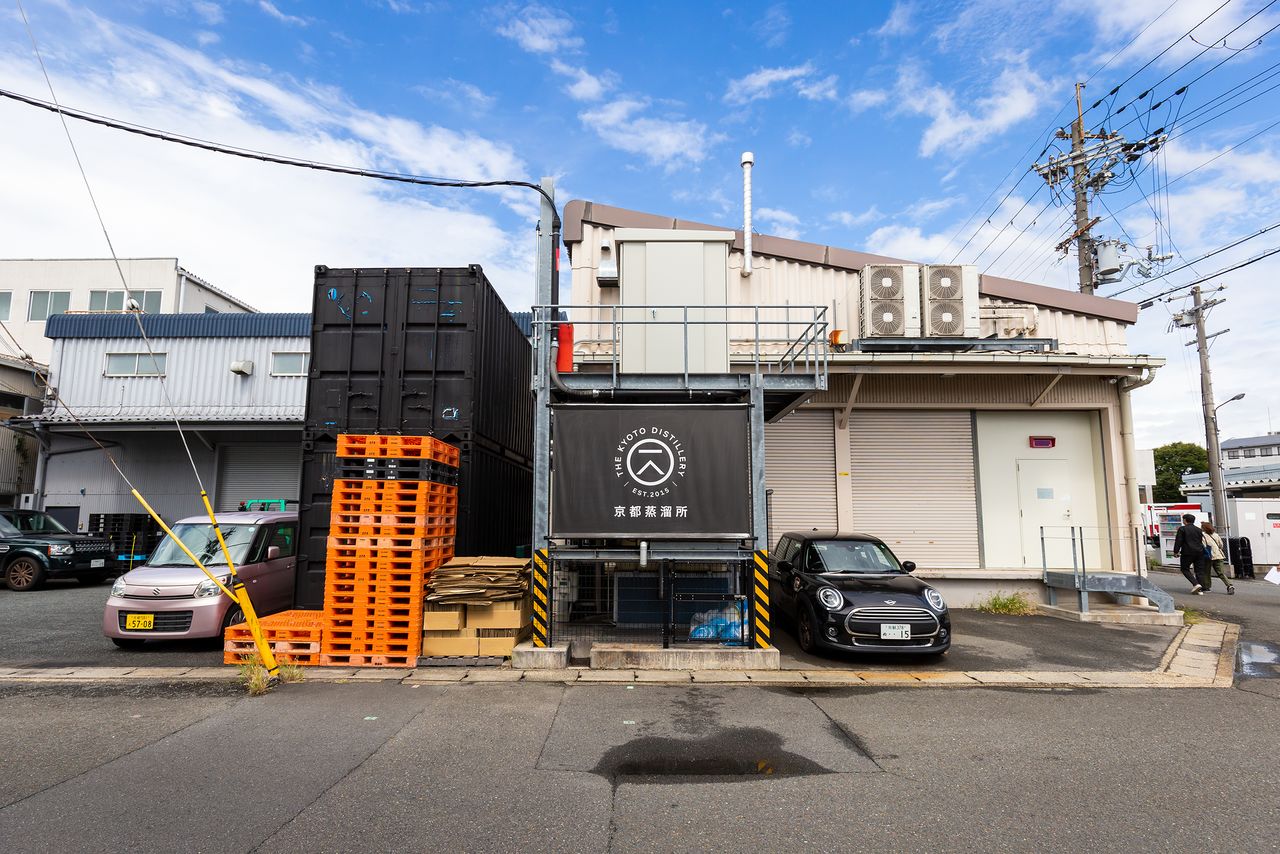
The Kyoto Distillery in the Kisshōin Shimanomazumechō neighborhood of Kyoto’s Minami Ward. It is usually closed to the public.
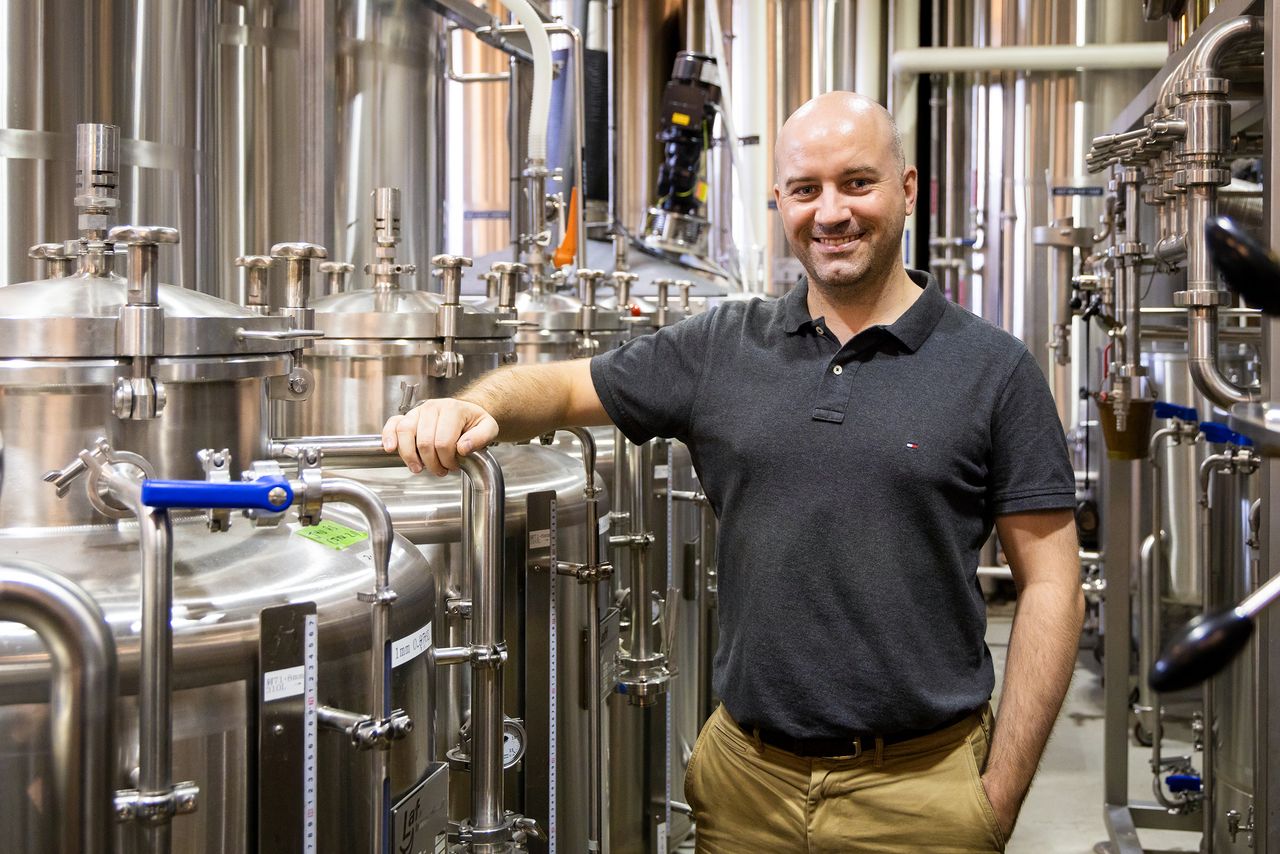
Ireland-born product manager Liam Morrissey is in charge of distillation.
The team chose the ancient capital of Kyoto in the hope of drawing inspiration from the city’s impressive history of artisanship. Kyoto is filled with craft traditions, from textiles and ceramics to cuisine and produce, and the distillery was founded with the aim of adding craft gin to this list.
One of its greatest appeals is its use of local ingredients. The distillery is near Fushimi, a district that boasts rich supplies of underground water that have helped make it famous for sake brewing. The distillery’s flagship label Ki no Bi uses water from venerable Masuda Tokubē Shōten sake brewery, known for the brand Tsuki no Katsura.
The distillery also uses Kyoto-grown botanicals to create a flavor that evokes a feeling of the city itself. The company has further tapped into local tradition with its new mainline dry gin, Ki no Tea , which uses tencha tea from Horii Shichimeien, an Uji tea shop founded in 1879.
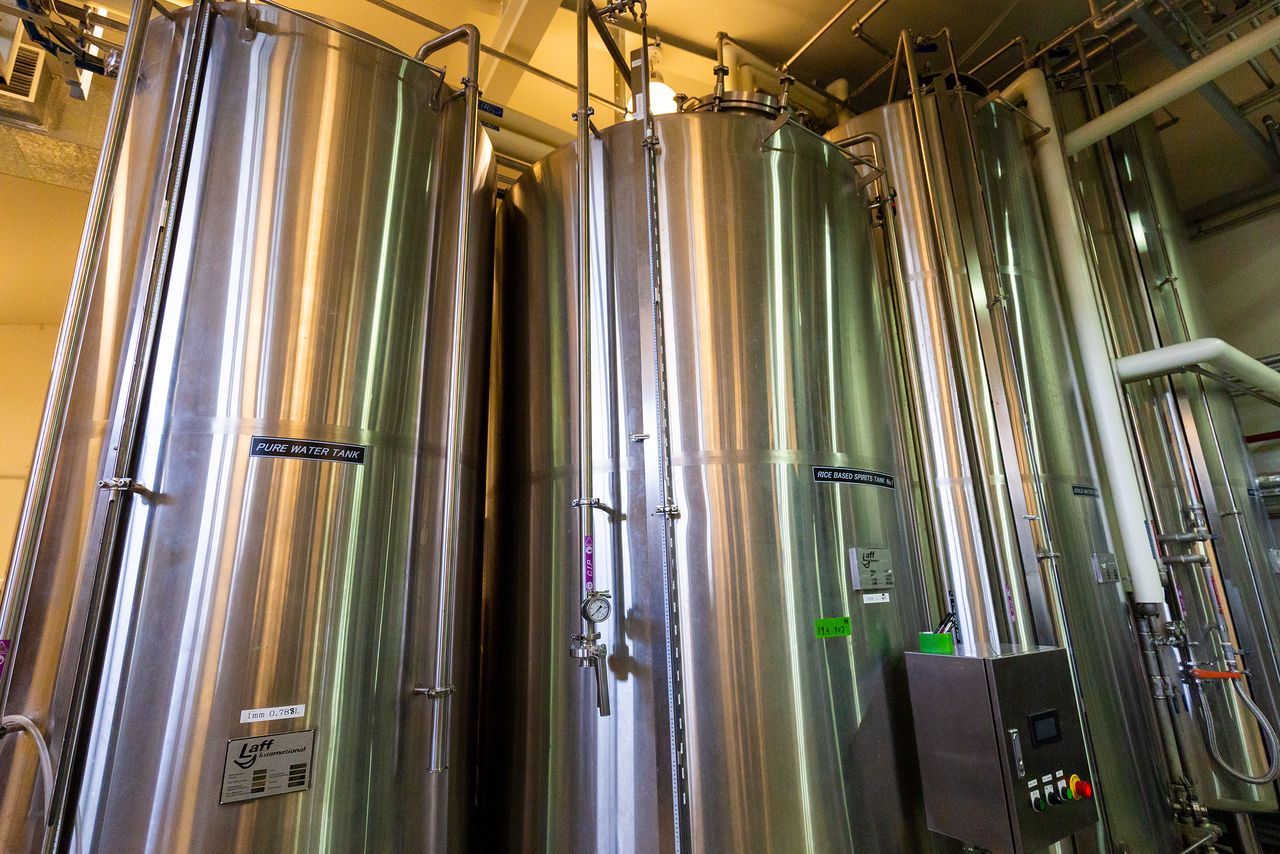
The tank at the far left holds the famous Fushimi water, while the one in the center contains the base spirit.
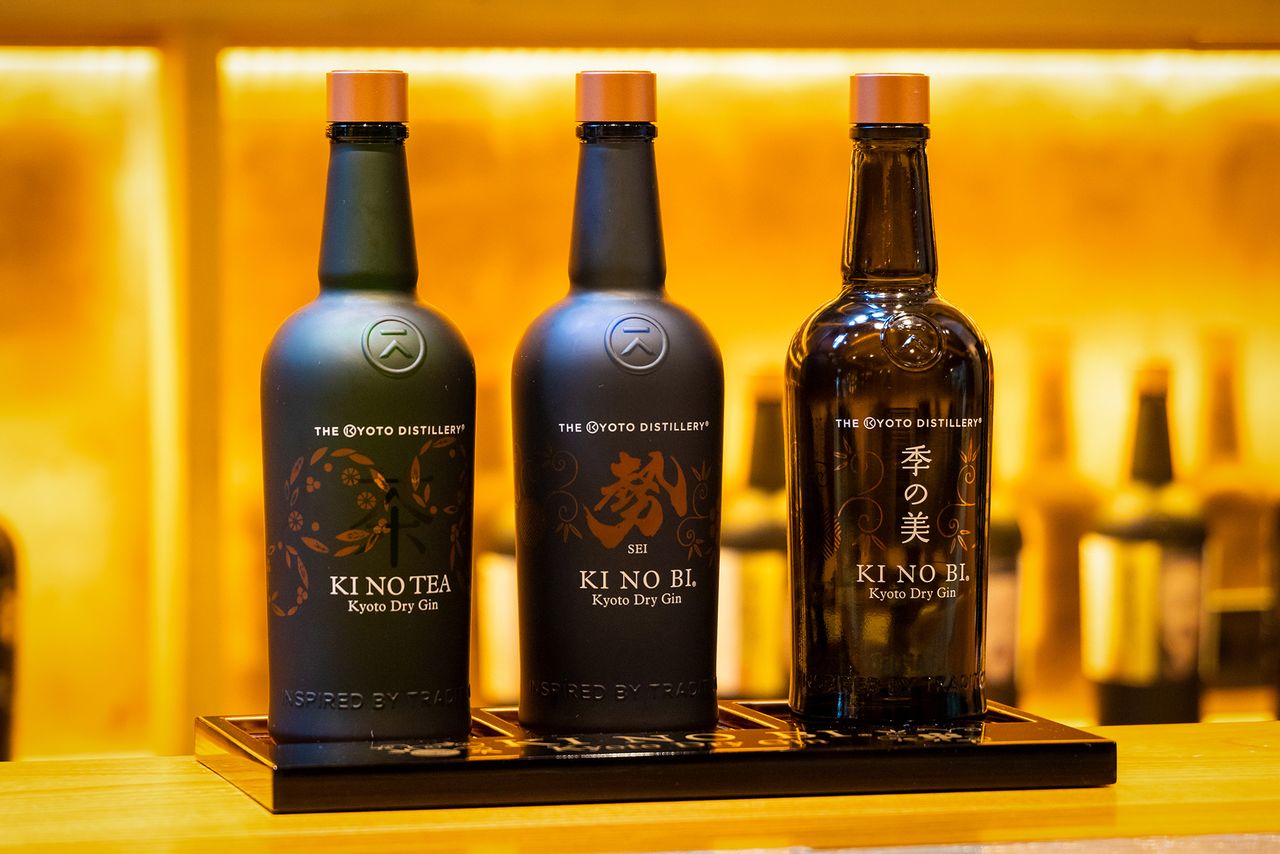
From left, dry gin labels Ki no Tea, Ki no Bi Sei, and Ki no Bi. Sei has a higher alcohol content, making it more suited for use in cocktails.
Painstaking Process to Bring the Flavors of Kyoto
The botanicals that go into Ki no Bi fall into six categories, what the distillery calls “elements,” which are base, citrus, herbal, spice, tea, and fruity and floral. There are a total of eleven botanicals used, starting with the base of juniper, orris, and akamatsu (Japanese red pine), to which is s added yuzu, lemon, sanshō, kinome (young leaves of the Japanese pepper), ginger, gyokuro, red shiso, and bamboo leaves.
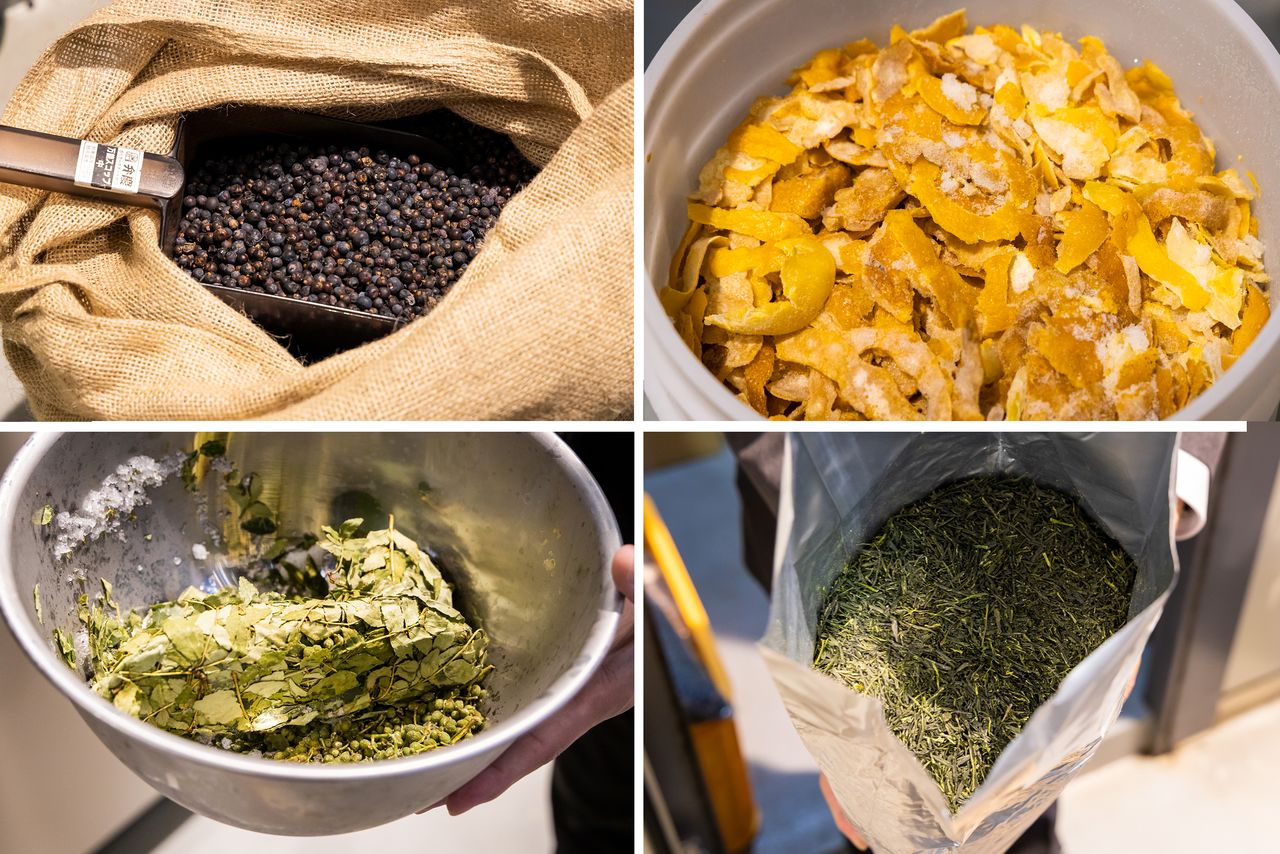
The juniper berries (top left) come from Macedonia and the yuzu (top right) from Kyoto, to which the distillers add Japanese-grown lemons (bottom left), and Kyoto-grown sanshō. They add kinome (bottom right) for spice since using sanshō alone would be overpowering. The gyokuro tea comes from a historic tea shop.
The base spirit is made from carefully selected domestic rice. The staff says that this gives a cleaner, gentler flavor than the more commonly used neutral spirit made from wheat, oats, corn, or sugar cane. Many gins are made by adding all the botanicals to the base spirit at once, but each element that goes into Ki no Bi is distilled separately to give it the ideal amount of maceration time to extract maximum flavor and aroma. Only then are the six element spirits blended with Fushimi water and allowed to mature.
In recognition of Ki no Bi’s unique flavor, the Kyoto Distillery entered into a capital alliance with France’s Pernod Ricard, the world’s second largest wine and spirits company. The distillery now uses that global sales network to export to 30 countries, including Britain, Australia, and Singapore.
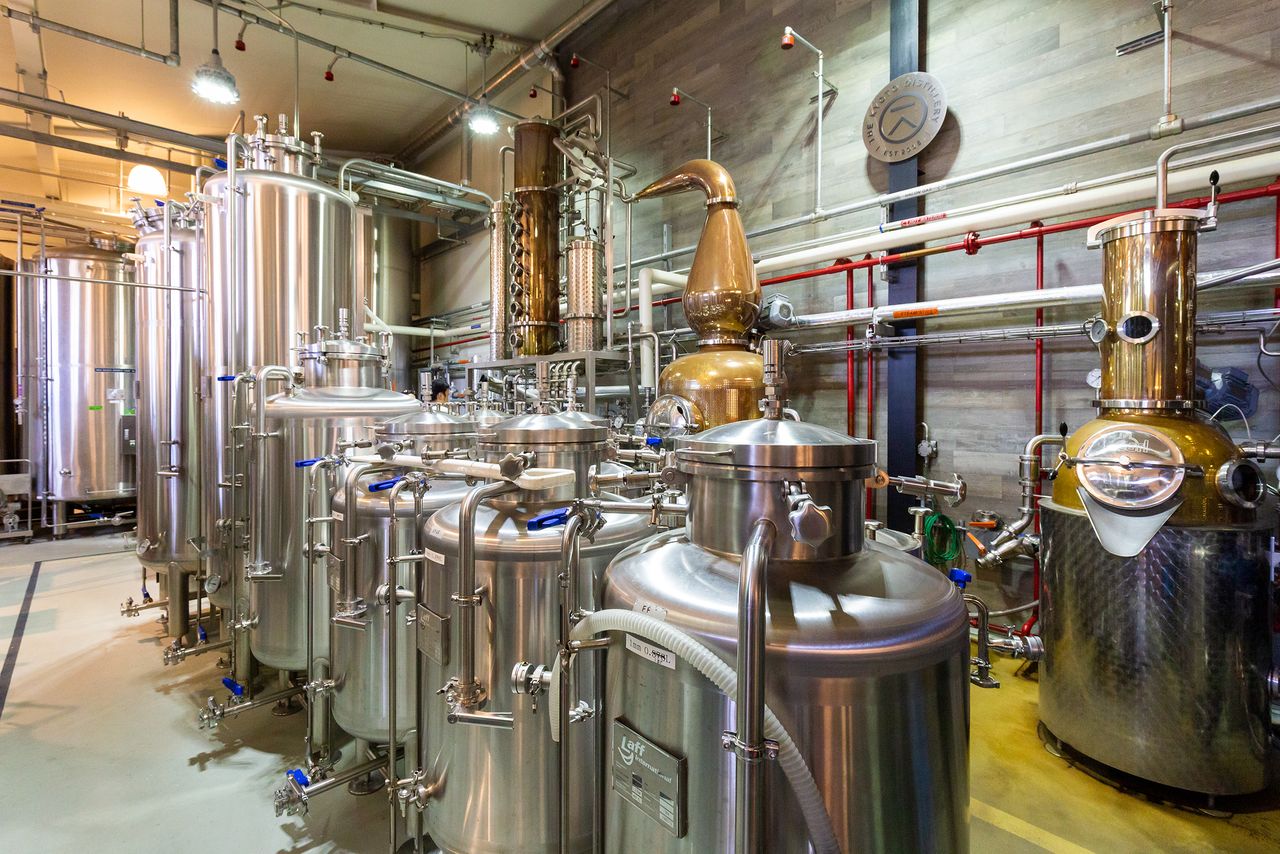
The tanks lined up in the foreground contain individual elements. The copper still in the center background plays a central role in the gin-making process.
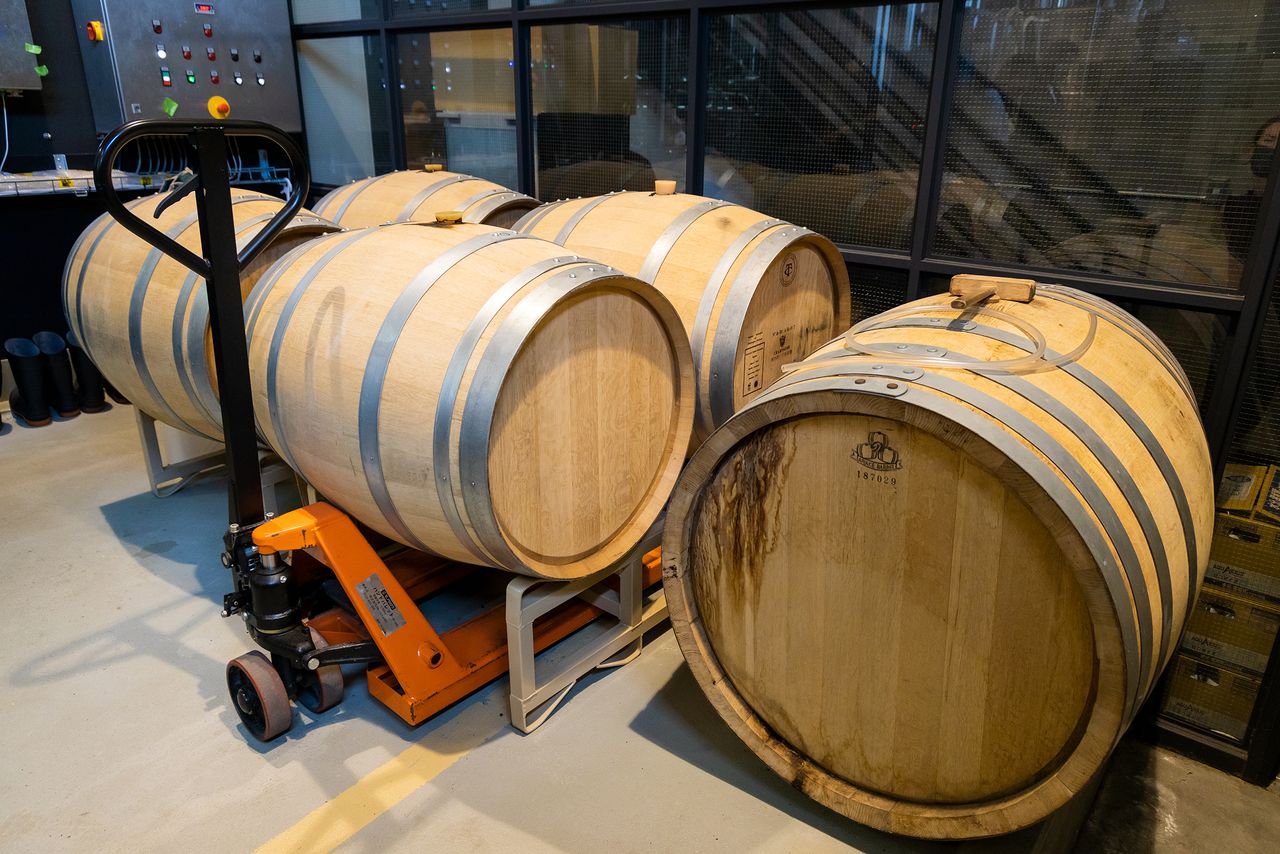
Whisky barrels are used to age Ki no Bi Edition K, a popular limited production gin, to add another layer of aroma.
A Place to Enjoy Base Elements
While the Kyoto Distillery is not open to the public, the company has renovated an over 100-year-old machiya townhouse near Kyoto’s city office into a brand shop, the House of Ki no Bi. There, visitors can learn about the intricate processes that go into producing gin, visit the onsite bar for a cocktail or light meal, or peruse the selection of gin labels and other offerings, making it a popular draw for craft gin lovers.
On weekends, the shop also puts on seminars offering participants tastes of the six base spirit elements and a chance to try their hand at blending up an original gin themselves.
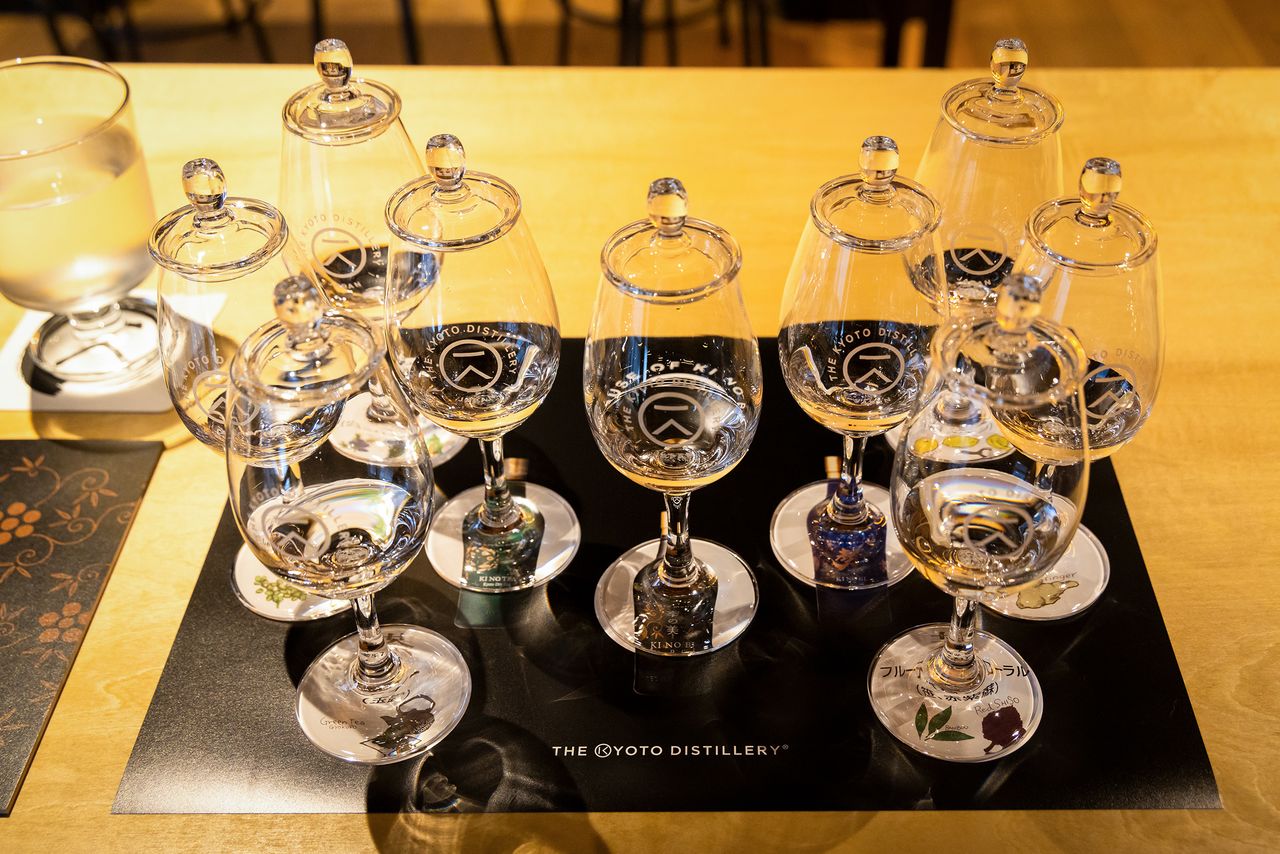
The seminar includes tastings of the distillery’s dry gin labels Ki no Bi, Ki no Tea, and Ki no Bi Sei, as well as the six base elements.
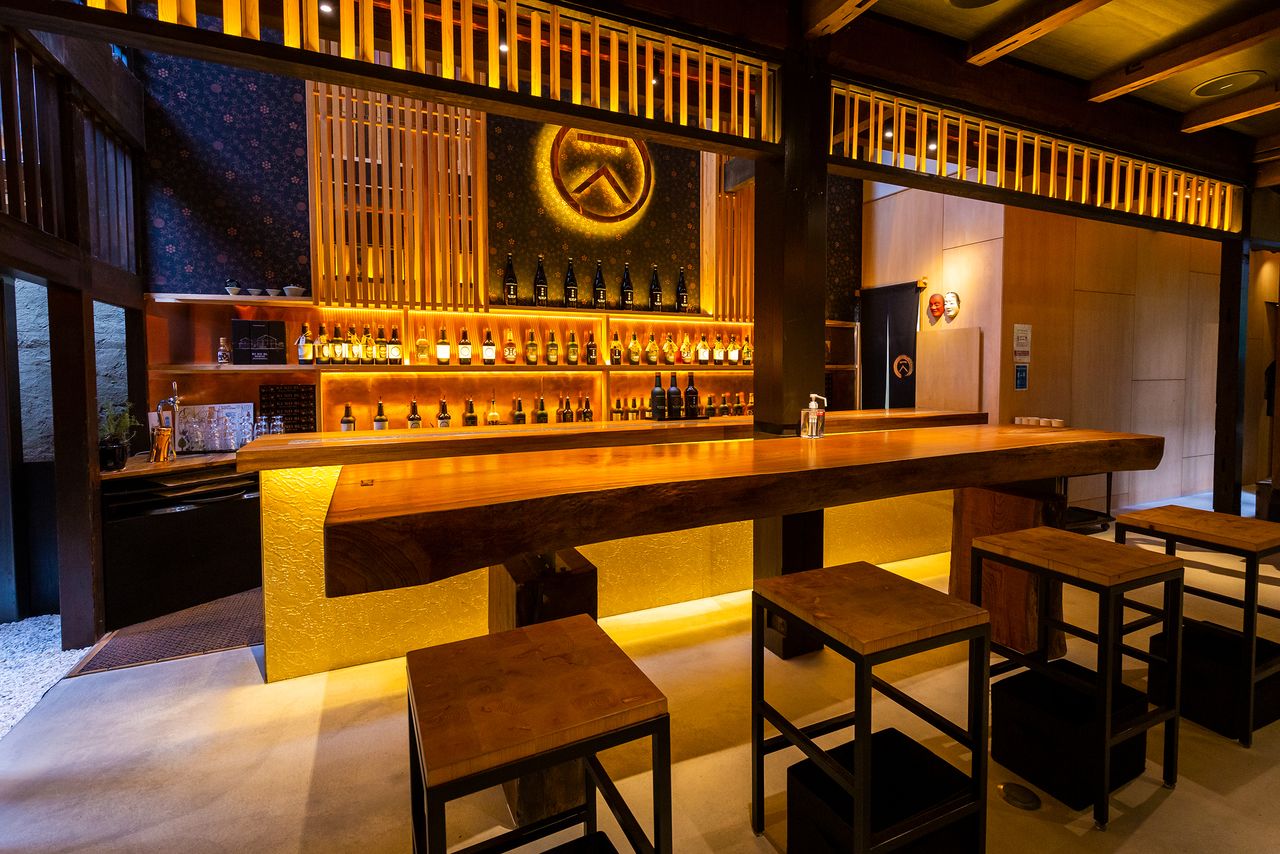
Ki no Bi no Ma is a bar offering a diverse range of cocktails featuring the house gin.
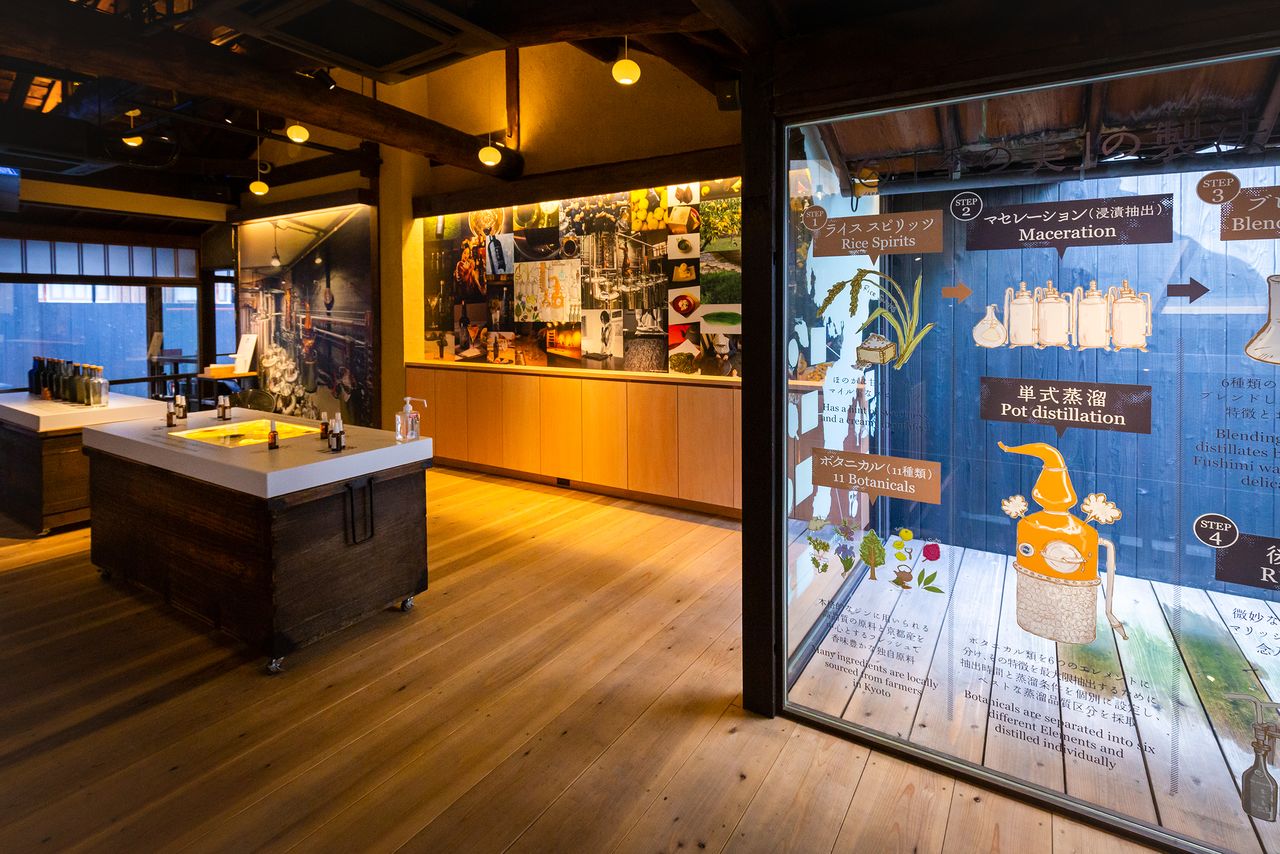
The second floor Tenji no Ma has exhibits explaining the history and varieties of gin and the botanicals that go into the spirit.
Another of the distillery’s offerings is a dry gin matured in wine barrels from the Amanohashidate winery, located on the Tango peninsula on the north coast of Kyoto Prefecture. It was launched in October of 2022 as a Kyoto-Prefecture only product, providing gin lovers another reason to stop by the House of Ki no Bi or one of Kyoto’s many authentic bars.
For those outside of Kyoto, promotional events like Kyoto ni Somaru held at bars in Tokyo, Yokohama, and Osaka are also highly recommended. Participating shops offer up Ki no Bi cocktails for a taste of the tradition and atmosphere of Kyoto.
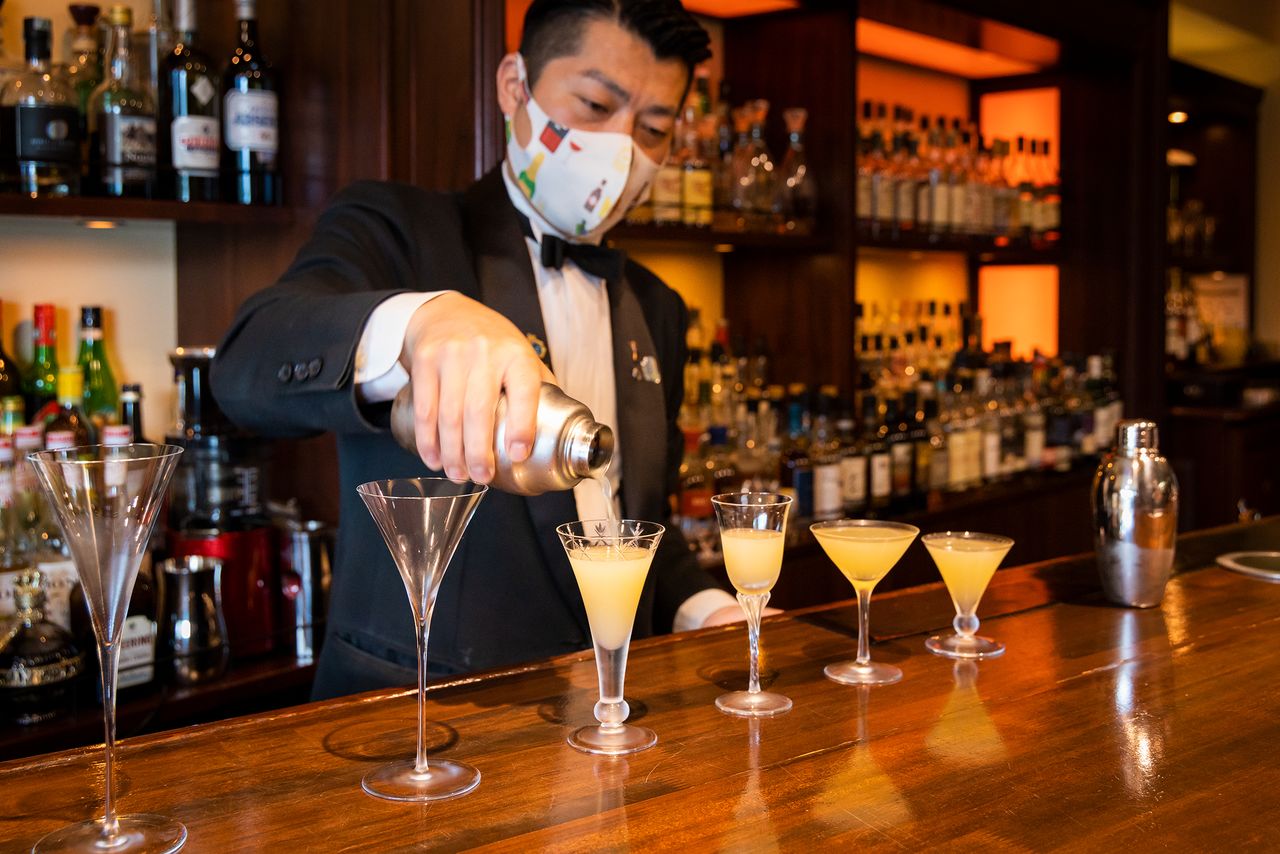
A bartender make a cocktail with Ki no Bi Amanohashidate Wine Cask at Bar K6 in Kyoto’s Kiyamachi.
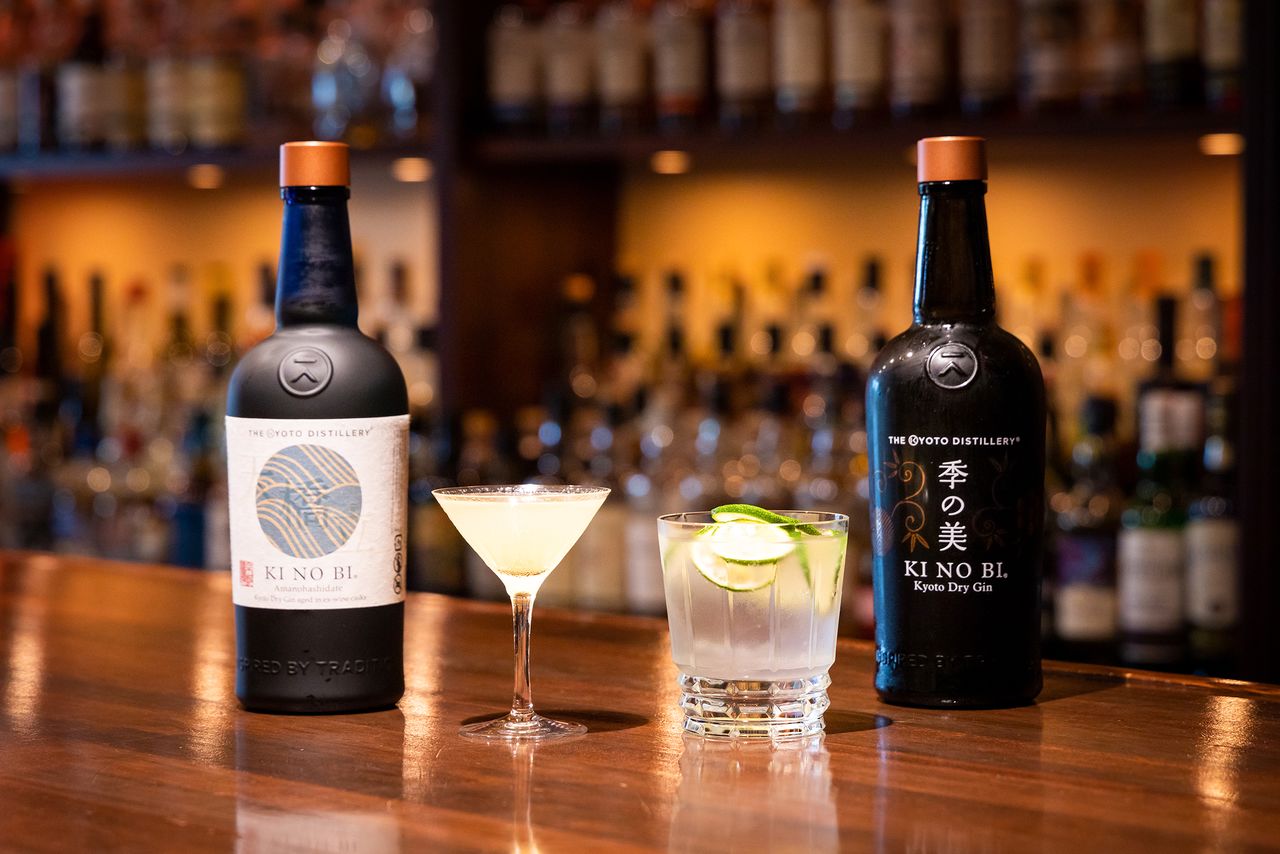
On the left is an Amanohashidate white lady with orange liqueur, lemon juice, and a touch of red wine salt, with a sudachi gin and tonic made with Ki no Bi on the right.
The House of Ki no Bi
- Address: 358 Shimizu-chō, Kawaramachi-dōri, Nijō-agaru, Nakagyō Ward, Kyoto
- Open Wednesday, Thursday, and Sunday, 12:00 pm–9:00 pm (last order 8:30 pm); Friday and Saturday 12:00 pm–10:00 pm (last order 9:30 pm)
- Closed Monday and Tuesday
- Ki no Bi Elements tasting seminars are ¥3,000; check official website for schedules
- Five minutes’ walk from Kyoto Shiyakusho-mae Station on the Kyoto Municipal Subway Tōzai Line
(Originally published in Japanese. Reporting, text, and photos by Nippon.com.)